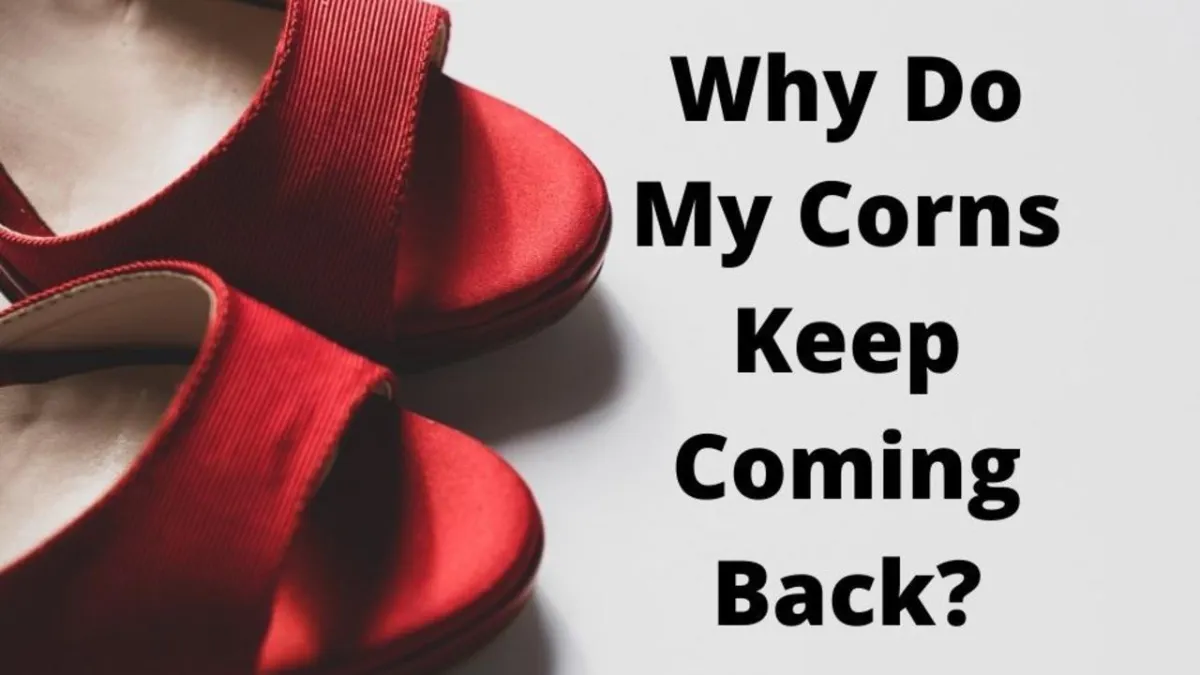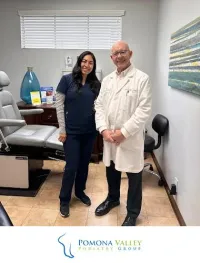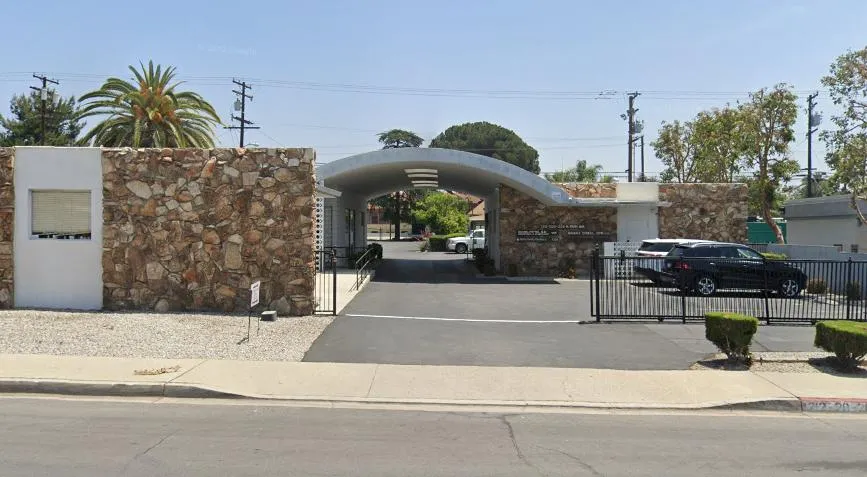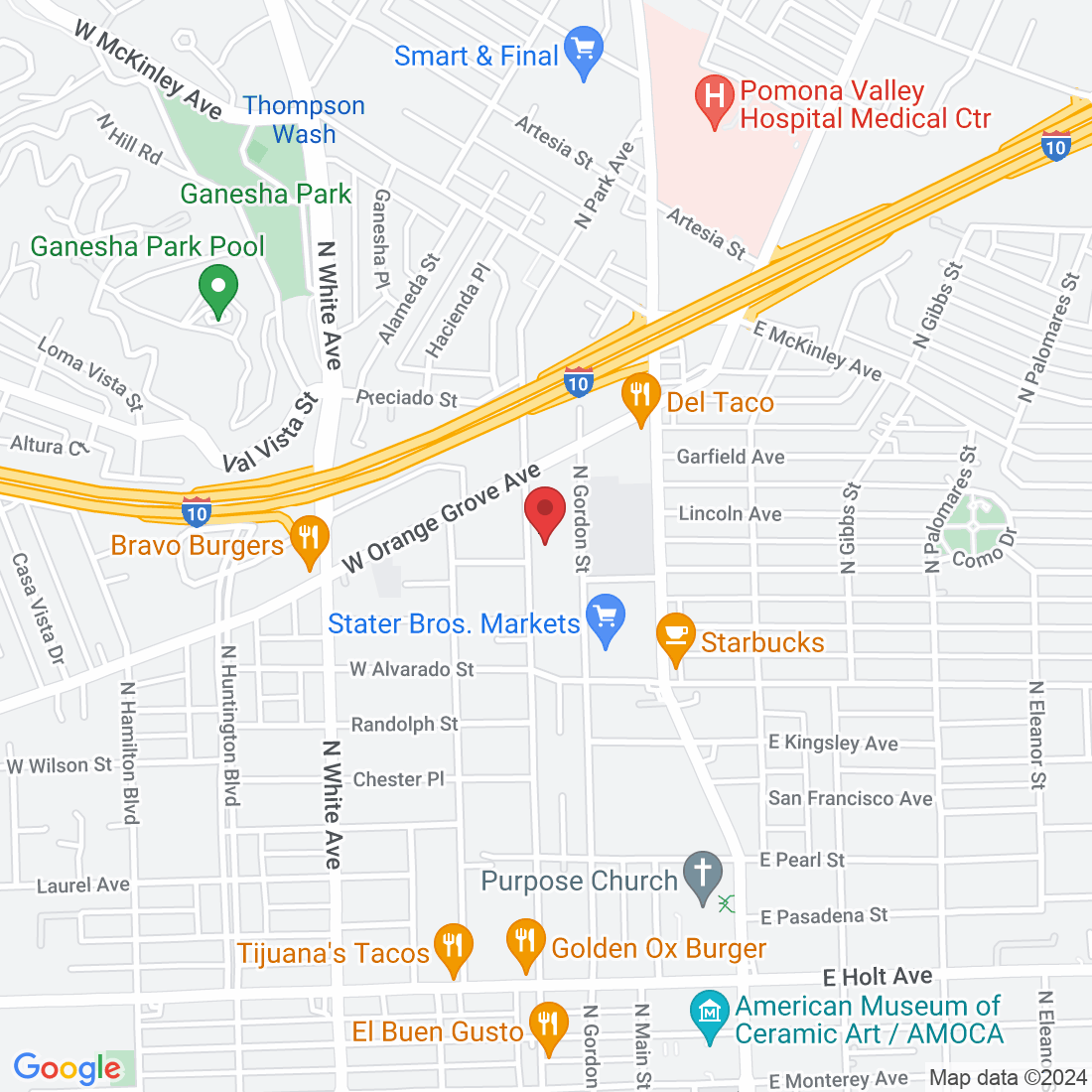
Why Do My Corns Keep Coming Back?
This is by far one of the most common questions asked at Pomona Valley Podiatry Group and this blog aims to answer exactly that.
But firstly, what is a corn?
Corns are dense ball-shaped patches of dead skin cells and can occur in
many different areas on the foot. There are three types of corns that
are most often seen in clinic;
● A hard corn,
● A soft corn and
● A seed corn.
A hard corn usually occurs on the underside of your foot as well as the
tops of your toes. Hard corns, as the name suggests, are thicker and
denser.
A soft corn is whitish in appearance and occurs between the toes,
normally between the fourth and fifth.
The surface of a soft corn is
much thinner and more rubbery in its presentation.
Finally the seed corn is the smallest in size and is often seen on the ball
of your foot, sometimes between the skin creases of your big toe joint
and the second toe joint. Seed corns usually appear in clusters and can
cause a burning type sensation for the average patient.
Hard and soft corns on the other hand (or foot!) cause more of a sharp
pain that increases over time if left untreated.
So, what causes corns?
Rubbing, friction and mainly pressure are the reasons for corns
developing and reoccurring.
Anything that increases this friction and
pressure will increase your risk of developing corns.
Ill fitting or tight fitting footwear is the main contributing factor and
that is why women are four times more likely than men to develop
corns.
Research tells us that most women wear shoes 2 sizes too small
while mean wear them 1 size too big.
High heeled footwear puts immense pressure, rubbing and friction on
all different areas of the foot so if worn on a regular basis the chances
of the corn returning, even after treatment, is very very likely.
Other causes include foot deformities such as bunions and hammer
toes.
It is very common to have a corn present on a bunion due to the
rubbing and pressure of the bunion within the shoe.
Hammer toes usually lead to corns developing on the top of your toes if
there is not enough depth in the toe box of the patient’s shoe. Coming
into summertime even wearing slip on sandals can lead to additional
friction and pressure on your feet, resulting in corns and foot calluses.
How do I treat my corn?
Corn removal is a simple and should be a pain free way of immediately
relieving yourself of the corn.
Padding can then be applied around the corn to give the area relief
when going back into footwear for the following day or two.
For more tricky corns between or around the toes, a custom wedge device can be made in clinic to wear whilst in footwear to offload areas of high
pressure/rubbing.
There are many treatments offered in other outlets, one that mainly
sticks out is the use of corn pads. Corn pads have a dose of acid within
the plaster that aims to dislodge the corn so it may fall out.
Unfortunately, too often as podiatrists we have seen the acid cause
harm to healthy surrounding tissues with not much success in treating
the corn itself.
As a result we strongly recommend you do not use cpr plasters to help
avoid ulceration.
The most important thing to understand is what is causing your corn to
develop in the first place... and after initial corn removal, the changes
needed to allow your feet to be finally corn free!
If you want rid of your corn or corns then Call Us today on (090) 622-4501 and let
Pomona Valley Podiatry Group help get you back on your feet.
Or
Fill Out The Form Below And One Of Our Amazing Team Will Call You
Ask And His Team
Fill in the form to request a Call From Our Team
One of our team will call you for FREE and answer any questions or concerns you may have about your uncomfortable foot condition





